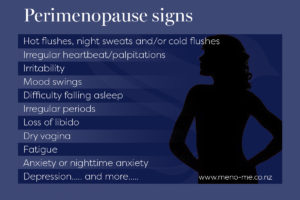The conversation around menopause just got even more impactful with the emergence of the Musculoskeletal Syndrome of Menopause. Hallelujah! We needed this.
Indeed, recent research is spotlighting a frequently overlooked aspect of midlife health: the musculoskeletal changes women experience during menopause. So, joint pain, muscle aches, frozen shoulder, and more are now grouped under a newly recognised condition called the Musculoskeletal Syndrome of Menopause.
The term was coined by renowned orthopaedic surgeon Dr Vonda Wright and her team. And it finally puts a name to symptoms that have gone unacknowledged for too long, giving many perimenopausal and post-menopausal women a clearer lens. Happy dance!
The Musculoskeletal Syndrome of Menopause: What We Know
The research stated that around 47 million women worldwide begin their menopause journey each year, typically between the ages of 45 and 55. Further, the transition can last up to a decade.
And a staggering 70% of these women are likely to experience musculoskeletal symptoms. It’s important to note that 25% experience severe symptoms and about 40% find no structural cause for their pain.
So that’s a massive number of women dealing with symptoms that have often been misunderstood or dismissed. Notwithstanding, this syndrome’s impact is profound and recognising it is the first step toward finding relief.
In addition, the study noted musculoskeletal symptoms such as these are less commonly recognised and can be silent and devastating.
What does Musculoskeletal Syndrome of Menopause include?

Common symptoms include:
- Joint pain and stiffness (arthralgia)
- Inflammation
- Loss of muscle mass (sarcopenia)
- Frozen shoulder
- Osteoarthritis
- Higher risk of tendon and ligament injuries
Why does Musculosketal Syndrome happen?
The decline in estrogen, specifically estradiol, plays a big role and as estrogen levels drop, so does muscle mass and bone density. Furthermore, ageing during perimenopause and post-menopause can further reduce muscle strength, increasing the risk of musculoskeletal issues.
Natural ways to support musculoskeletal health during menopause
While more research is needed, certain natural strategies may help:
Anti-inflammatory diet: we’re big advocates of the Mediterranean style of eating because it consistently comes out as a winner for women’s health.
Vitamin D3 & K2: support bone health and reduce inflammation. D3, found in foods like salmon and tuna, helps the body absorb calcium, while K2 aids calcium uptake for strong bones.
Creatine: Aids in muscle function and may prevent muscle loss.
Magnesium: Important for muscle and bone health.
Exercise: Regular resistance training.
**The study noted resistance exercise may be critical for post-menopausal women to mitigate their risk of falls and fractures.
Conclusion
In the past, some of the conditions associated with the Musculoskeletal Syndrome Of Menopause haven’t always been associated with the transition.
So, this is ground-breaking research and a huge step forward. What’s more, it will probably pave the way for further study into these very common symptoms of peri and post-menopause.
Here at MenoMe®, we’re committed to supporting women’s health with evidence-based botanical solutions. As such, we pop our nerd hats on and do our homework!
Therefore, our Perky Post® includes vitamin D3 (the same form produced by the skin in sunlight) and vitamin K2.
This is because vitamin D3 (cholecalciferol) helps with calcium absorption, bone density and inflammation. Indeed, low levels have been linked to chronic pain.
And vitamin K2 aids the body’s uptake of calcium into the bone.
We hope this is of help to you, please ask if you have questions.

Disclaimer: Our articles are guidelines only and should never be taken as medical advice. Any signs and symptoms you’re experiencing could be due to a number of reasons. If you’re experiencing ongoing signs, please see your health professional.
References:
https://www.tandfonline.com/doi/full/10.1080/13697137.2024.2380363#d1e533
Keywords: Musculoskeletal system; menopause; perimenopause, post-menopause










